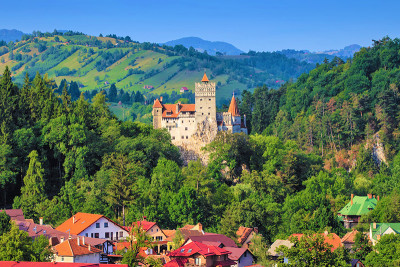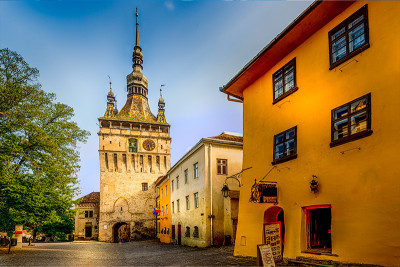Whether you are a big Dracula fan or not, taking the “Dracula Tour” through Romania is a fun thing to do, and will allow you to see parts of the country that you might not otherwise get to see. If you are unfamiliar with the background of Dracula and how he relates to Romania, here is the quick rundown: Dracula is a novel written by Irishman Bram Stoker, who read a book on Wallachia (a former civilization that was located in current-day Romania) and decided to place his tale there.
To be more precise, Stoker’s novel is about a vampire that lives in an ominous castle that overlooks a cliff in Transylvania. The castle that Stoker writes about is all in his imagination, but there actually is a castle that fits the bill in Transylvania: Bran Castle. Because of this, Bran Castle is also known as “Dracula’s Castle”.
Some people speculate that Count Dracula (the vampire) was a character based off the real-life Wallachian ruler, Vlad III Dracula, also known as Vlad the Impaler. It is difficult to say with any certainty that this was Stoker’s intention, but there are some similarities between the two.
Whether or not there is truth to the novel Dracula, there are plenty of sites in Romania that you can visit to try to decide for yourself! What is even better is that Stoker did his research on Romania before writing his book, so there are many real locations that he wrote about that you can visit!
Vlad Iii Dracula’s House
Address: Str. Cositorarilor 5
City: Sighisoara
While Vlad’s house was not mentioned by Stoker in his novel, if you are interested in seeing where the “real” Dracula was born, you can head over to the town of Sighisoara. It is a quant medieval town located in the middle of Romania. His house is located on Tin Street No.1, between the Citadel square and the clock tower. It is a small place, but you can eat at the restaurant located on the ground floor and afterwards head up to the weapons museum on the floor above.
The Old Princely Court (Palatul Curtea Veche)
Address: Strada Franceza 25-31
City: Bucharest
This is the site of one of Vlad’s dungeons. It is located in oldtown Bucharest and was built in the 15th century. Today, all that remains are some of the walls, arches, tombstones and a Corinthian column. The remains are available to visit as a museum, the Old Court Museum. It was opened in 1972 when an archeological dig yielded this historical structure.
When the dungeon was dug out, Dacian poetry and old Romanian coins were found as well. The Dacians were the original inhabitants of Romania and their bloodline still exists in Romania today. Also in these ruins was a document from 1459 signed by Vlad himself.
The Old Court Church
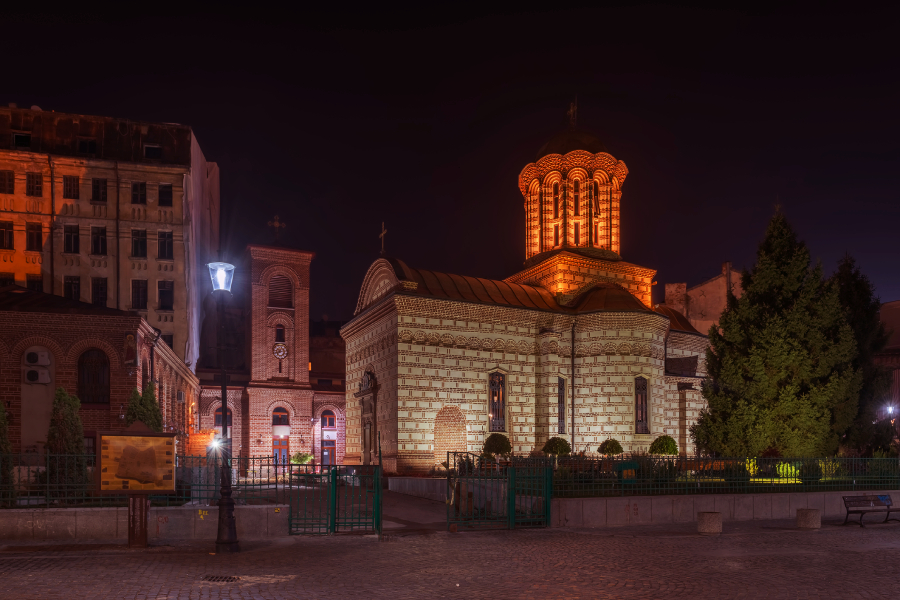
City: Bucharest
Right next to the Princely Court is the Old Court Church (also known as St. Anton Church), which was where many Romanian princes were crowned. It was built around 1350 and is the oldest church in Bucharest. Even some of the frescoes from the 1500s are still there, preserved. Vlad likely visited this church.
Snagov Monastery
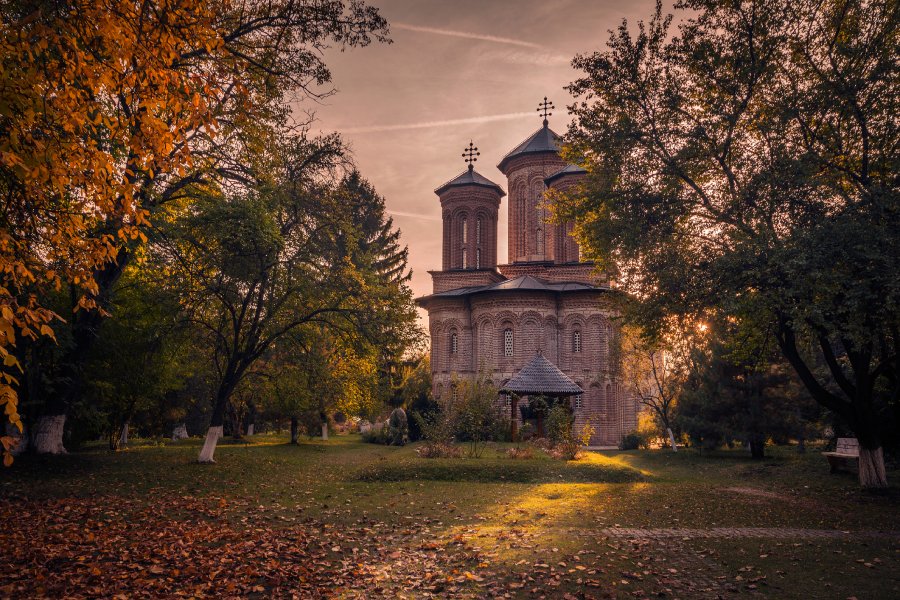
Address: Strada Mânăstirea Vlad Ţepeş
City: Siliștea Snagovului (about 25 miles north of Bucharest)
Just like Count Dracula, we do not actually know where Vlad’s remains lie. However, legend has it that his body rests here in this Monastery. In fact, the Monastery even has a plaque on the floor, marking his grave. It has long been believed that Vlad really is buried there, but more recently this story has been contested. The Monastery is located on a small island, so to get to it you either have to cross a pedestrian bridge or get there by boat.
Targoviste Princely Court (Curtea Domneasca)
Address: Calea Domneasca 181
City: Targoviste (about 65 miles northwest of Bucharest)
Vlad the Impaler was ruler of Wallachia and this Princely Court was the capital of Wallachia. This is one of the famous sites of Vlad’s impaling – apparently he had invited many boyars (a rank of royalty, right below prince) that disagreed with him to a meeting. He had the boyars stabbed, then had their wriggling bodies impaled on spikes.
Poenari Fortress (Cetatea Poenari)
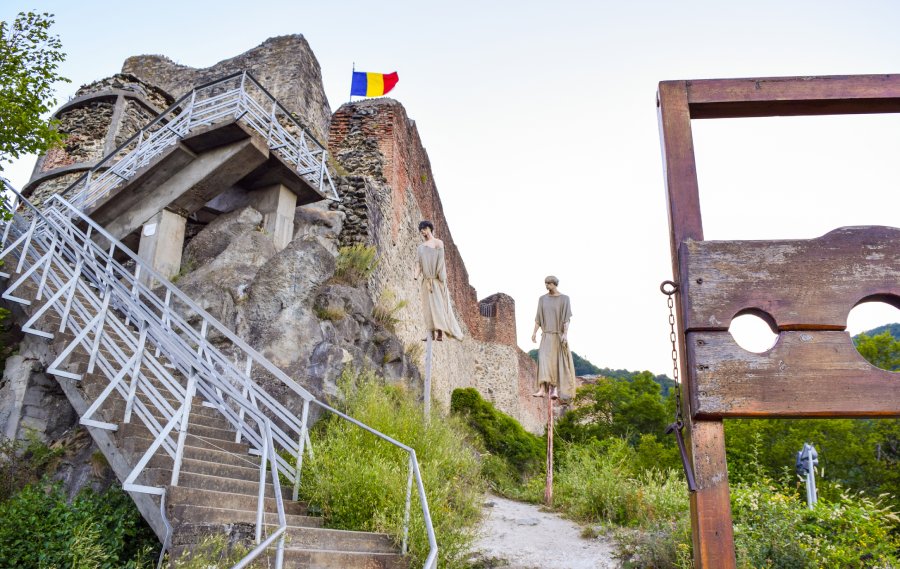
City: Valachia (about 108 miles northwest of Bucharest)
This was Vlad’s actual castle (not Bran Castle). And although we are including this on the list of places to visit to on your “Dracula” tour, you actually cannot visit this fortress until 2022. This Castle is nowhere near as beautiful as Bran Castle, but it is still quite impressive. To reach it, you have to climb 1462 steps, as it sits on a cliff, overlooking the Arges River.
It was originally built in the 13th century, but it changed hands a couple times and then was abandoned. Vlad saw potential in the structure and had it repaired before moving in during the 15th century. It saw continued use after Vlad’s death, but within a century it was abandoned again. The Castle began to wear down and in 1888 there was a huge landslide that caused a large portion of it to fall into the river below it. It was partially repaired, but was never in use again.
Arefu
City: Arefu (about 105 miles northwest of Bucharest)
While there is no one specific spot that we recommend visiting in Arefu, visiting this rural town will (hopefully) help you get a better sense of the place and scenery that Vlad had during his time.
This town is home to many people whose ancestors served Vlad. Not only that, but when the Turks were after Vlad and attacked his Castle in 1462, Vlad fled to Arefu and was saved by the villagers. You can flee to Arefu too, and stay with locals at a bed and breakfast or a small hotel!
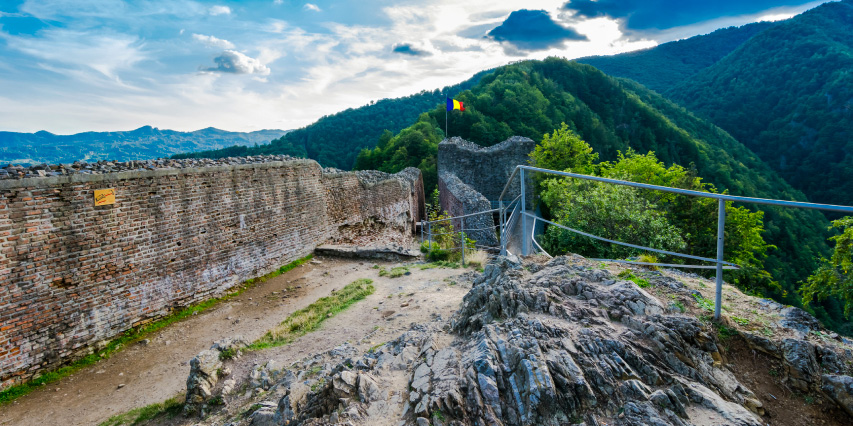
 ES
ES
 IT
IT
 DE
DE
 FR
FR
